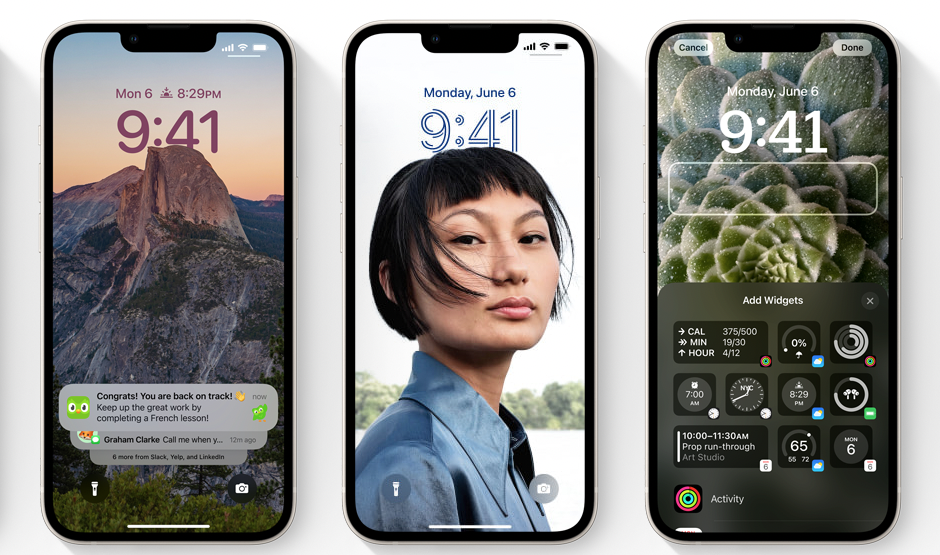Like clockwork, this coming autumn will bring a new version of iOS. As expected, the latest version will offer plenty of new technologies for developers to integrate into their apps. Let's look at the most interesting ones.
Weather for everyone
One of the most prominent new developer-focused features is the WeatherKit framework. It has been rumored ever since Apple acquired the popular Dark Sky app. With the new framework, every app can make use of detailed weather data without the developers needing to find 3rd party services. The native framework also means developers don't have to implement the basic stuff, like JSON parsing.
Apps can make up to 500k requests each month for free; higher usage requires developers to pay. Pricing has been available since the reveal. (https://developer.apple.com/weatherkit/get-started/)
WeatherKit could be interesting for non-weather apps where the current conditions of other weather information can enhance the user experience. For example, a calendar app can show the weather for upcoming events.
Content sharing
Last year iOS 15 brought the "Shared with You" feature to system apps. This feature made it easier for users to find content shared via iMessage in the respective app. For example, if you had received a podcast link, it was shown directly in the Apple Podcasts app along with the attribution.
iOS 16 expands this feature to all developers. Apps that already support Universal Links will have a much easier time implementing Shared with You because this new feature builds on Universal Links. Once enabled, developers can request a list of shared links in-app and display Apple-provided views that show metadata about the shared content.
It is also worth noting how Apple chose to implement this. Apps have no idea who sent which link to protect user privacy. The system renders the attribution views outside the app.
Almost effortless charts
Up until now, adding charts to iOS apps meant looking for 3rd party libraries and hoping to select the most suitable one with long-term support. This won't be necessary come iOS 16. Apple has introduced a brand new framework called Swift Charts.
It is a fully-featured charting framework for creating all kinds of charts. Developers can create simpler ones with just a couple of lines of code. Another benefit is support for all Apple platforms. This means the same code to create a chart can also be used on Mac or perhaps Apple Watch.
Revamped Lock Screen
All the changes to iOS 16 Lock Screen could be an entire article. It seems like Apple noticed the immense popularity of widgets added in iOS 16, which allowed a lot of customization. With the new version of iOS, users can configure multiple lock screens and quickly switch among them. Similar to how watch faces work on Apple Watch.
You will be able to customize the font and color of the time. But above else, you will be able to add new widgets directly below the time and date. These widgets share design language with Apple Watch complications and are notably simpler than existing widgets.
These new widgets offer new opportunities for developers to get their apps on users' lock screens. Apps with existing widgets will have an easier time since these new ones use the same technology.
Another option to showcase apps on the lock screen is a new feature called Live Activities. It has a similar UI to the audio player and will keep the user up- to-date on important events. Apple showcased live sports scores and also food delivery in the presentation.
And last but not least, there is another cool addition. iPhone will be able to analyze lock screen photos, find objects in the foreground and use them to mask part of the clock to create a 3D effect.
In a surprising move, Apple opened up the Screen Time features to developers. Since iOS 15, these tools have been open only to devs creating parental control apps. This limitation has now been lifted.
As the developers behind AppBlock, we are hugely excited by this news, and it shouldn't come as a surprise that we are already hard at work on a new version that utilizes Screen Time to block access to apps.
Room scanning in seconds with Room Plan
AR perhaps did not get as many new things as fans would hope, but there are still new technologies. The most visible one is called Room Plan, which allows devices equipped with the LiDAR scanner to create detailed room plans, including furniture. These can be exported for later use.
Although niche, Room Plan demonstrates Apple's continued investments into the AR space and its payoffs. I would recommend checking out the overview video (https://developer.apple.com/augmented-reality/roomplan/).









.png)



